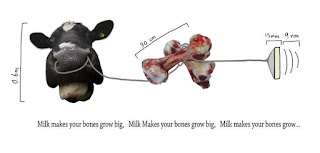Art and Nanotechnology
In many spaces of advancement of today’s world, science appears to be pushing the front farther and farther forward, changing many aspects of our lives. New technologies and information are developed on a daily basis that continually alter the human existence. Nanotechnology seems to be one of these areas. Richard Feyman, a renowned American physicist, first introduced the idea to science in a talk in 1959, titled “There’s Plenty of Room at the Bottom” (Gimzewski). Over the course of the following decades, scientists have developed this technology into many areas, including cancer detection, agricultural production, and gene therapy (Boyle).
 |
| Nanotechnology Altering DNA |
What is interesting though is that it seems art may have begun experimenting in nanotechnology long before the scientists. Nanoparticles, defined particles on the size from one to 100 nanometers, have been used in art for centuries, only artists had not realized it. One example is the Lycarus Cup using nano-sized gold particles which caused the cup to appear green when illuminated with external light and red when illuminated from internal light. Another example is the Pottery of Deruta which used similar techniques but with nano-sized silver particles (Gimzewski). Artists were ahead of the scientists in nanotechnology and they were not even aware!
 |
| Lycarus Cup |
Today, art continues to be impacted by nanotechnology. Art exhibits have used nanotechnology to create speakers from bone tissue and microscopes that examine the line between life and death at the nano level (“John Curtis Gallery”). In addition, scientific developments in nanotechnology have allowed for more effective techniques of art conservation. New nano-particles can not only be used to coat art pieces to prevent damage, but even reverse damage by removing oils or melding flaking paint (Pramanik). Art and nanotechnology have had a very visible past and seem to have a promising future.
 |
| Nanotechnology Design for Bones as Speakers |
Works Cited
Boyle, Rebecca. “7 Amazing Ways Nanotechnology Is Changing The World.” Popular Science, 14 Nov. 2012.
Gimzewski, James K, director. Introduction to Nanotechnology for Artists (Part 1). Youtube, 21 May 2012.
Gimzewski, James K, director. Introduction to Nanotechnology for Artists (Part 3). Youtube, 21 May 2012.
“John Curtin Gallery.” Art.Base, 5 Feb. 2010, art.base.co/event/2104-art-in-the-age-of-nanotechnology.
Pramanik, Sunipa. “Art Conservation and Nanotechnology.” Sustainable Nano, 12 May 2017.


Comments
Post a Comment